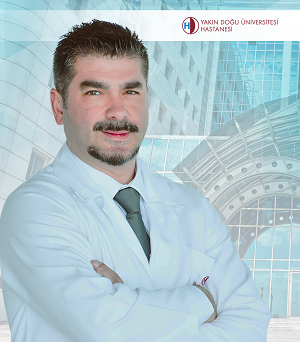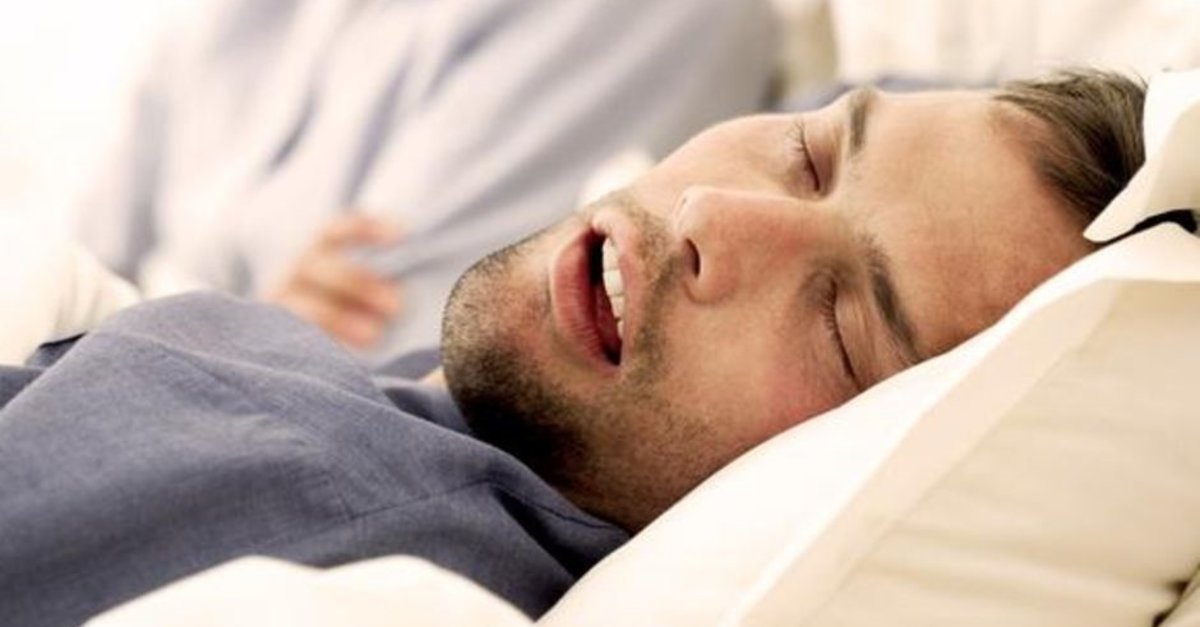
Near East University Hospital Otorhinolaryngology Head and Neck Surgery Department Specialist Prof. Dr. K. Çağdaş Kazıkdaş says that snoring, which is seen in at least half of adults and a significant portion of children, is an important sleep disorder. He stated that snoring is most common in adults due to nasal obstruction, bone curvature, nasal growths, allergies and chronic sinusitis.
Prof. Dr. K. Çağdaş Kazıkdaş, Near East University Hospital Otorhinolaryngology Head and Neck Surgery Department Specialist, delivered information relevant to the current methods used to treat snoring which is one of the major sleep-disordered breathing.
Delivering information to the Directorate of Press and Public Relations of NEU, Prof. Dr. Kazıkdaş said: "We spend a substantial part of our lives asleep. Sleep is a required activity, not an option. Sleep serves us to restore what is lost in the body while we are awake. Sleep provides an opportunity for the body to regenerate the metabolism and musculoskeletal system. Many of the major restorative functions in the body like muscle growth, tissue repair, protein synthesis, and growth hormone release occur mostly, or in some cases only, during sleep.
Besides, the leptin hormone, which is a mediator of suppressing food intake, is secreted while we are asleep. However patients with sleep disorders have a tendency to gain weight. In overweight patients the circulating level of the hormone leptin is increased and they become leptin-resistant. Thus the leptin hormone contributes to the development or maintenance of obesity. Sleep disorders and snoring occur more frequently in people who are overweight. Snoring occurs when the flow of air through the mouth and nose is physically obstructed. Obstructive sleep apnea (OSA) syndrome is a potentially serious sleep disorder affecting 4% people in the society. Enlarged tonsils and adenoids are the most common cause of obstructive sleep apnea in children. The clinical presentation of a child with obstructive sleep apnea (OSA) is nonspecific and requires increased awareness by the primary care physician. Diagnostic procedures for pediatric obstructive sleep apnea may include an overnight sleep study and an evaluation of the upper airway by a sleep specialist, or an ear, nose and throat (ENT) physician. Often, a sleep apnea team member may directly visualize the airway with a flexible fiber optic nasopharyngoscopy. Endoscopy is the golden standard for the diagnosis procedure as there is no risk to harm the child. Once the sites of obstruction are identified, appropriate treatment can begin.
Polysomnography also helps to confirm a diagnosis of OSA, as well as evaluate the severity of the disease process in adults. This sleep study can be performed at a sleep lab or at home to monitor and determine disturbances in patient's sleep. In addition to polysomnography or polygraphy a 3-Dimensional CBCT scan may be obtained to evaluate patient's airway. Patient's airway with a flexible fiber optic flexible nasopharyngoscopy is directly visualized. This can be done comfortably in the office setting to further visualize possible sites of obstruction along your airway. In moderate to severe cases of Sleep Apnea, the treatment may involve wearing a CPAP (Continuous Positive Airway Pressure) device while sleeping. The CPAP mask provides pressurized air to limit airway obstruction for the sleeper. CPAP is the standard first-line therapy for most patients diagnosed with OSA. The CPAP machine directly relieves the obstruction by counteracting airway narrowing through the delivery of compressed air to the oropharynx, thereby keeping the airway open with increased air pressure. CPAP may prove effective in treating sleep apnea but it is not a cure. The symptoms will return when the patient stops using CPAP.

Diagnosis and treatment methods
Patients may be offered multiple surgical options depending on the level of obstruction. In adults the level of apnea can be determined with endoscopy by Muller's Maneuver. Patients who have OSA show varying degrees of collapse in the side walls of the velopharynx, at the base of the tongue, and nasal congestion caused by permanent or temporary structural anatomic blockage like septal deviation or swelling of the nasal tissue. As a result of relaxation of the muscles in the soft palate elongation and thickening of the uvula may occur. Depending on the patient's anatomical structure, the base of the tongue may narrow the airway passage. Elongated or excessive tissue of the soft palate, bulky tongue, enlarged uvula, large tonsils, and redundant pharyngeal mucosa are the most common causes of snoring and obstructive sleep apnea.
Nasal surgery techniques including nasal septoplasty and radiofrequency ablation (volumetric tissue reduction) of the nasal turbinate may be applied to patients with nasal based OSA. Radiofrequency ablation technique is used to correct nasal swelling or deformity. Septal surgery or septoplasty is used to straighten and thin a deviated or abnormal nasal septum. Tonsillectomy surgery is used to remove the enlarged tonsils. Along with the usual tonsils that are removed in a tonsillectomy, there is also tonsil tissue at the base of the tongue. This can enlarge and contribute to airway obstruction. A lingual tonsillectomy can sometimes be done to open up the airway lower in the throat. In a group of patients the palatine tonsils are contiguous inferiorly with the lingual tonsils. The point of attachment, known as the plica triangularis, must be transected during tonsillectomy. Uvulopalatopharyngoplasty is the most common surgery used to treat sleep apnea based on soft palate problems. The soft palate is trimmed or adjusted forward, and the tonsils and uvula may be removed. Uvulopalatopharyngoplasty has been modified in the form of Z-palatoplasty. Although this technique was first described for patients without tonsils, it has been further modified to include tonsillectomy along with pharyngoplasty. Z-palatoplasty (ZPP) and Lateral pharyngoplasty are palatal surgery techniques that successfully used to treat OSA in recent years. Lateral pharyngoplasty is a procedure combined with tonsillectomy and involves a combination of tissue removal and tissue repositioning of the soft palate as well as the lateral pharyngeal tissues. The goal of the procedure is to increase the size of the airway without affecting normal functions such as breathing, speaking, and swallowing.
We have adequate medical centers and qualified staff to diagnose and determine the appropriate treatment options
Left untreated, sleep apnea can have serious and life-shortening consequences including high blood pressure, heart disease, stroke, depression, and other ailments. Scientific studies have proven that sleeping disorders causes hardening of arteries by impairing metabolic order and consequently leads to coronary diseases. Besides, it is known that sleep disorders cause insulin resistance and diabetes. A major symptom is extremely loud snoring, sometimes so loud that bed partners find it intolerable. Other indications that sleep apnea may be present are obesity, persistent daytime sleepiness, bouts of awakening out of breath during the night, and frequently waking in the morning with a dry mouth, sore throat or a headache.
Prof. Dr. Çağdaş Kazıkdaş finalized his explanations saying; “All these factors impair the patient's quality of life. Due to all these factors, patients lose their self confidence and they find themselves in vicious circle. Even, they avoid travelling and sleeping somewhere away home. As in other diseases, diagnosis and treatment of sleep disorders without severe and permanent damage are great of importance. Now, in our hospitals we have adequate medical centers and qualified physicians to diagnose and offer appropriate treatment options.”